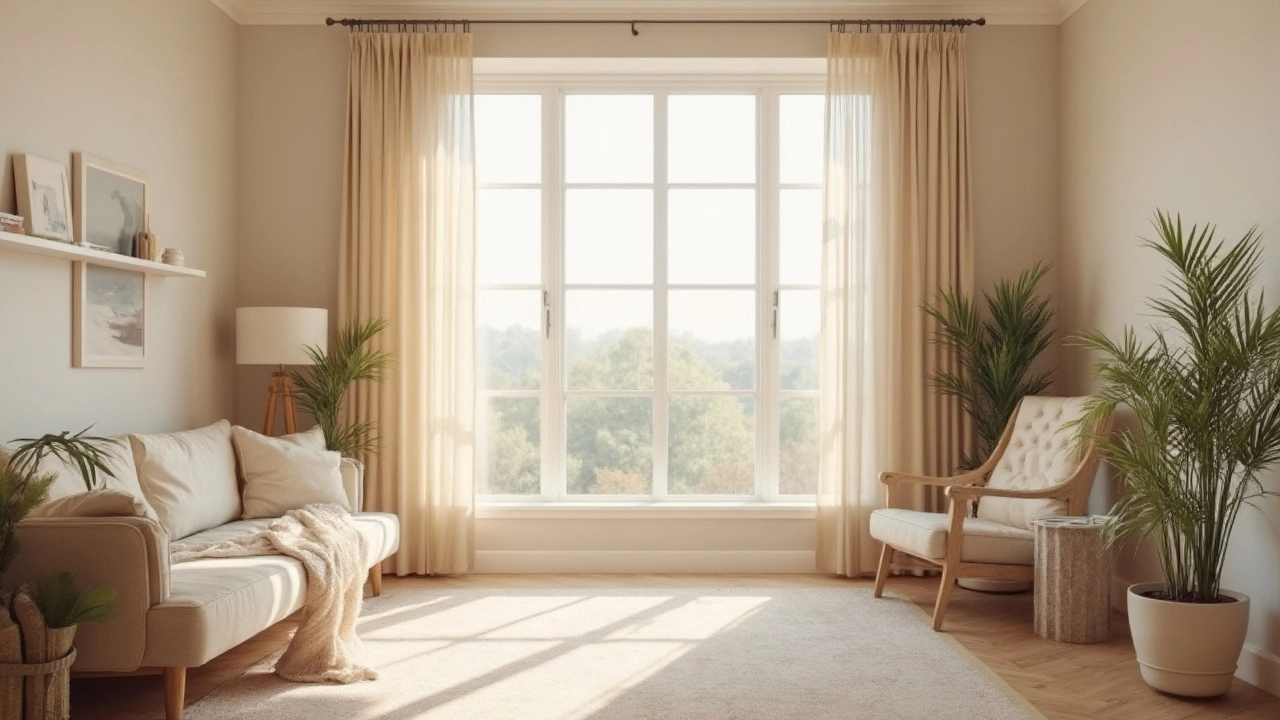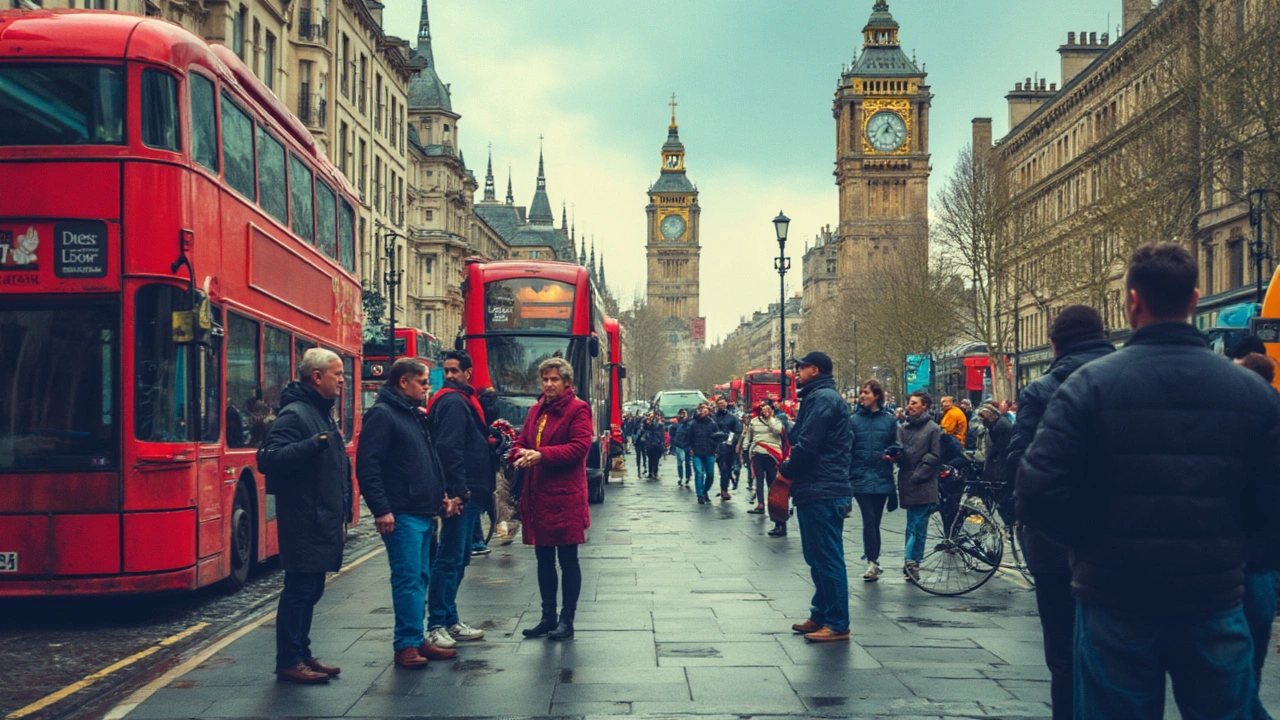How Your Environment Shapes Your Life: More Than You Think
 Mar, 29 2025
Mar, 29 2025
Ever notice how a walk in the park can lift your mood? It’s not just in your head. Our surroundings play a bigger role in shaping our daily lives than we often realize. Whether it’s the calming effect of greenery or the stress from constant city noise, the environment around us can speak volumes to our mental and physical health.
Green spaces, for instance, are like nature's medicine. Studies show that even a small patch of greenery can reduce stress, improve mood, and boost creativity. Think about it: ever wonder why big companies deck out their offices with plants? It’s not just for aesthetics—there’s science backing up how greenery can make us more productive!
But let’s not forget the not-so-great stuff, like noise. Ever spent an afternoon in a bustling city center with horns blaring and sirens wailing? That constant racket can spike your stress levels without you even realizing it. So, the environment is not just about what we see but also what we hear and even smell.
- The Power of Green Spaces
- The Noise Factor
- Colors and Moods
- Urban vs. Rural Living
- Tips to Transform Your Space
The Power of Green Spaces
Green spaces are like hidden gems in our urban living environment, offering a pause from the concrete jungle. Did you know that a study found people living near green spaces reported less anxiety and depression? That's because nature has a way of calming our minds. A small park or a patch of grass can do wonders for our mood and well-being.
One fascinating fact is that just a 20-minute stroll in a green area can boost your energy levels by 20%. That's the same feeling you get from a cup of coffee minus the caffeine crash. Imagine that! Plus, spending time in green spaces can enhance memory and concentration.
It's not just about mental health, though. Green areas help reduce air pollution, which is a big deal in crowded city areas. More plants mean more oxygen, which equals cleaner air. A cleaner environment can help tackle the effects of pollution-related diseases, which are more common in big cities.
If you're keen to make the most of green spaces, you're in luck! They're more accessible than you think. Here’s how you can incorporate more green into your life:
- Neighborhood Park Visits: Find a local park and make it a habit to visit regularly, even if just for a brief walk.
- Gardening at Home: Even if it's a small plant on a windowsill, surrounding yourself with greenery can uplift your mood.
- Community Green Initiatives: Join or start up a community garden. It's not only a great way to access green space but also to meet like-minded people.
So, why not give yourself a break and step into nature? Your mind and body will thank you!
The Noise Factor
Noise is like that unwelcome guest who overstays their welcome. In urban areas, the constant hum of traffic, construction, and even people chatting can pile on stress without you noticing. It's not just an annoying background hum—exposure to high noise levels can lead to serious health problems, including high blood pressure and even heart issues.
Researchers have found that being around continuous noise impacts your concentration and can mess with your sleep. Have you ever tried to fall asleep in a noisy neighborhood? It's tough, right? That disturbance is more than just irritating; it throws off your whole sleep cycle, which in turn can affect your mood and how you function the next day.
For those living in urban sprawl, it might feel impossible to escape the noise. But fear not, there are ways to fight back. You can use noise-canceling headphones or invest in some sturdy earplugs. Even something as simple as adding thick curtains to your space can help soften the racket coming from outside.
If you're keen on reducing environmental impact, think about planting trees or installing green roofs. They don't just look nice; they actually absorb sound, acting like nature's soundproofing material. So next time you're in a noisy spot, remember there's hope—sometimes it's about finding that clever workaround to make life a bit quieter.

Colors and Moods
Ever thought about why certain rooms make you feel calm or why a bright red wall makes some people uneasy? Believe it or not, colors have a huge impact on our emotions and energy levels. It's not some mystical concept—it's backed by real psychological studies!
Let's get into the details: different colors can evoke different responses. For instance, blue is known for its calming effect. That's why it's often used in bedrooms and offices, where a clear mind and relaxation are key. On the flip side, red can stir up feelings of excitement or even aggression. It's why you might see it in places meant to energize, like gyms.
So, what's the deal with how a simple paint job can change our mood? Our brains process colors based on personal experiences and cultural associations, leading us to react emotionally to our surroundings. Pretty wild, right?
Here's a handy guide on how other colors might affect you:
- Yellow: Often associated with happiness and warmth, but too much can cause frustration.
- Green: Represents balance and is thought to relieve stress, making it perfect for hangout spots.
- Purple: Can inspire creativity and is often linked to luxury, ideal for artistic spaces.
- Orange: Acts as a mood-lifter and can boost motivation.
Now, a tip for making your space work for you: consider what feeling you want to evoke in a particular room and choose your colors strategically. Want a cozy reading corner? Stick with earth tones. Creating a workspace? Go for blues or greens to keep you chill and focused.
Urban vs. Rural Living
Ever debated the pros and cons of city life versus living in the countryside? It's not just a matter of personal preference; our surroundings definitely influence how we feel and live.
Urban living, with its fast pace and constant noise, might make life seem exciting, but it’s not always great for the soul. Cities are often hot spots for air pollution and stress—you’ve probably felt the hustle and bustle at some point. On the bright side, cities offer amenities like great public transport, diverse food scenes, and endless entertainment options. But is it worth the trade-off of peace and quiet?
Meanwhile, rural landscapes, with their farmlands and wide-open spaces, can be a haven for tranquility. The slower pace means less stress and more time to enjoy life's little moments. Plus, people who live in the countryside often enjoy better air quality, which is a big win for long-term health. However, rural living can sometimes mean fewer job opportunities and less access to health services or the latest tech goodies.
How about a quick comparison? Check this out:
| Aspect | Urban | Rural |
|---|---|---|
| Noise Levels | High | Low |
| Air Quality | Poor | Better |
| Amenities | Plentiful | Limited |
| Job Opportunities | More | Less |
Whichever you choose, there's no denying that our surroundings directly affect our lifestyle and well-being. It's not just about what we see but the air we breathe, the sounds we hear, and the pace we set.

Tips to Transform Your Space
Want to make your living space a sanctuary without breaking the bank? Here's some down-to-earth advice to help create a space that feels good to live in and boosts your mood and productivity too. After all, a little change can go a long way in influencing your environment.
First up, let’s talk greenery. Plants are not just for decoration—they can purify the air and make a room feel more alive. Consider starting with low-maintenance options like succulents or snake plants if you’re new to the plant game. No green thumb? No problem. These plants are hardy and require minimal attention.
- Spice up your surroundings: Add a few colorful plants to your workspace or living room. The burst of nature can help decrease stress and increase concentration.
- Embrace natural light: Keep curtains open during the day to let sunlight wash into your space. If privacy is a concern, try sheer curtains that let light through but keep prying eyes out.
- Quiet corners: Create a designated quiet zone in your home, away from the hustle and bustle. Fill it with comfy seating, soft lighting, and maybe even some light background music to help you unwind.
- Personalize with purpose: Surround yourself with items that have a story—a photo from a memorable trip or a quirky mug you love. Personal touches can make a generic space feel uniquely yours.
Colors matter more than you might think. Blue can add a sense of calm, while yellow can inject some happiness into your daily routine. Even small pops of color in the form of cushions or wall art can have a big impact.
Maybe you're big on tidiness. Good news: Decluttering doesn’t just make a space look better; it can boost your mental clarity too. British scientist and writer Marie Kondo once said,
"The best way to find out what we really need is to get rid of what we don’t.”It’s all about keeping what truly makes you happy or serves a purpose.
If you're into stats, here’s a fun fact: A study found that people working in spaces with plants can be up to 15% more productive. That's a lot of extra productivity just from adding a touch of green.
| Element | Impact |
|---|---|
| Plants | 15% increased productivity |
| Natural light | Boosts mood and focus |
| Colors | Directly influence emotions |
Ready to transform your space? Remember, it doesn’t have to be big changes. Even little tweaks add up, creating an environment that's both fun to be in and good for you. So, roll up those sleeves, and let’s breathe some life into your surroundings!
